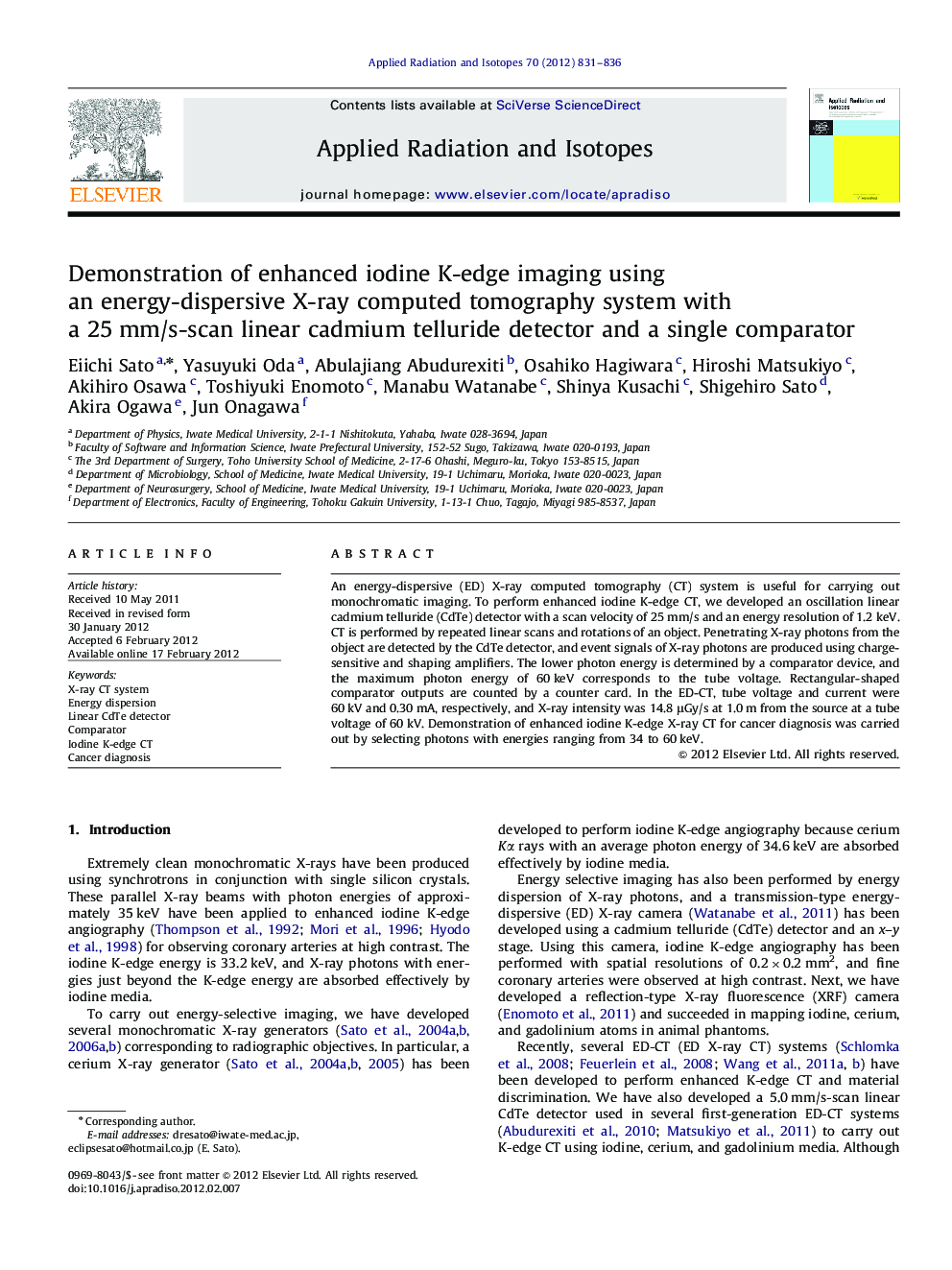| Article ID | Journal | Published Year | Pages | File Type |
|---|---|---|---|---|
| 1876233 | Applied Radiation and Isotopes | 2012 | 6 Pages |
An energy-dispersive (ED) X-ray computed tomography (CT) system is useful for carrying out monochromatic imaging. To perform enhanced iodine K-edge CT, we developed an oscillation linear cadmium telluride (CdTe) detector with a scan velocity of 25 mm/s and an energy resolution of 1.2 keV. CT is performed by repeated linear scans and rotations of an object. Penetrating X-ray photons from the object are detected by the CdTe detector, and event signals of X-ray photons are produced using charge-sensitive and shaping amplifiers. The lower photon energy is determined by a comparator device, and the maximum photon energy of 60 keV corresponds to the tube voltage. Rectangular-shaped comparator outputs are counted by a counter card. In the ED-CT, tube voltage and current were 60 kV and 0.30 mA, respectively, and X-ray intensity was 14.8 μGy/s at 1.0 m from the source at a tube voltage of 60 kV. Demonstration of enhanced iodine K-edge X-ray CT for cancer diagnosis was carried out by selecting photons with energies ranging from 34 to 60 keV.
► We developed an energy-dispersive X-ray CT system with a 25 mm/s-scan CdTe detector. ► CT is performed by repeated linear scans and rotations of an object. ► Lower photon energy is determined by a comparator device. ► Spatial resolutions were 0.5×0.5 mm2. ► Iodine K-edge CT was carried out by selecting photons from 34 to 60 keV.
